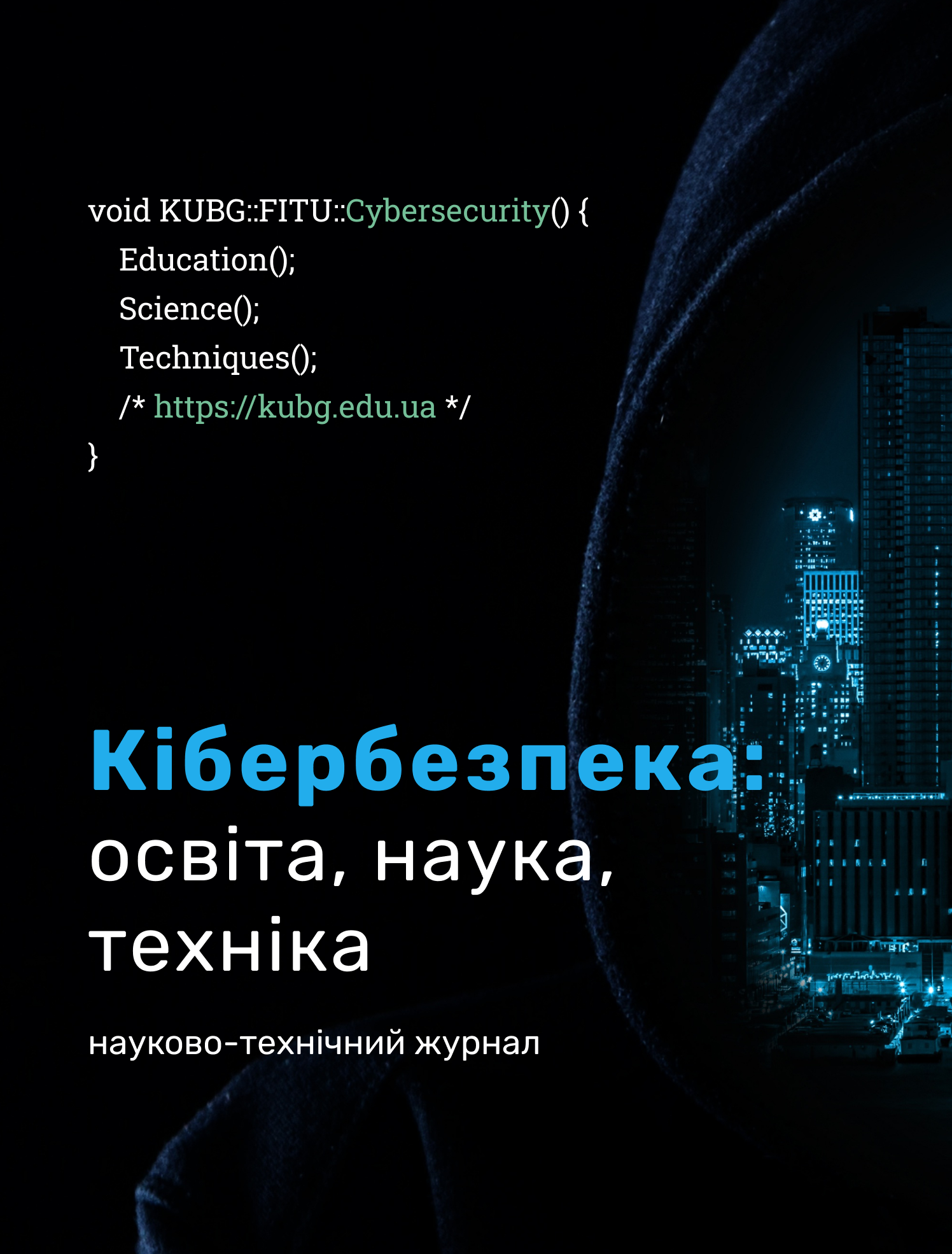USE OF NON-FUNGIBLE TOKENS AND BLOCKCHAIN TO DEMARCATE ACCESS TO PUBLIC REGISTRIES
DOI:
https://doi.org/10.28925/2663-4023.2024.24.99114Keywords:
blockchain; Non-Fungible Tokens (NFT); authorization; identification; delimitation of access; decentralization.Abstract
In today’s world, where digital technologies play an increasingly important role in various aspects of life, protecting data and ensuring its confidentiality and integrity is becoming an increasingly urgent task. This problem is especially important in the context of state registers, which contain a large volume of valuable information about citizens, businesses and other entities. Delimiting access to public registers is a key task for ensuring security, transparency and efficiency of data management in government bodies. In this context, the use of Non-Fungible Tokens (NFT) and blockchain technology can be a promising solution. This article examines the possibilities of using NFTs and blockchain to delimit access to public registries in Ukraine. This paper defines key concepts such as NFT, blockchain, identification, authentication, and access control and examines their possible applications for delimiting access to public registries. It also describes how the use of blockchain and NFT technologies can be a key solution for ensuring the security and efficiency of public registry management. Blockchain, as a distributed database, provides reliable storage of transaction history and impenetrable encryption of data. Each block in the chain has a unique hash that links it to the previous block, making any attempt to change the data in the blocks nearly impossible without detection. On the other hand, Non-Fungible Tokens (NFT) can serve as unique digital identifiers that define access rights to specific data in public registries. Each NFT contains a unique digital signature that confirms its ownership and characteristics, and can be used to precisely define access rights to specific data or resources. Together, these technologies can create a reliable and secure infrastructure for managing public registries, ensuring transparency, privacy and irreversibility of transactions.
Downloads
References
Behl, A., Pereira, V., Nigam, A., Wamba, S. & Sindhwani, R. (2024). Knowledge development in non-fungible tokens (NFT): a scoping review. Journal of Knowledge Management, 28(1), 232–267. https://doi.org/10.1108/JKM-12-2022-0937
AlKhader, W., Jayaraman, R., Salah, K., Sleptchenko, A., Antony, J. & Omar, M. (2023). Leveraging blockchain and NFTs for quality 4.0 implementation in digital manufacturing. Journal of Manufacturing Technology Management, 34(7), 1208–1234. https://doi.org/10.1108/JMTM-05-2023-0172
Chohan, U. W. (2021). Non-Fungible Tokens: Blockchains, Scarcity, and Value. Critical Blockchain Research Initiative (CBRI) Working Papers.
Dowling, M. M. (2021). Is Non-fungible Token Pricing Driven by Cryptocurrencies?
Kraken. (n.d.). What are Non-Fungible Tokens? (NFT). https://www.kraken.com/learn/what-are-non-fungible-tokens-nft
Christidis, K., & Devetsikiotis, M. (2016). Blockchains and Smart Contracts for the Internet of Things. IEEE Access, 4, 2292–2303. https://doi.org/10.1109/ACCESS.2016.2566339
Dong, M., Wang, X., Niyato, D., & Han, Z. (2021). Blockchain for Secure and Trustworthy IoT: A Survey. IEEE Access, 9, 4955–4971. https://doi.org/10.1109/JIOT.2019.2920987
The Certicom ECC Challenge. (n. d.). https://www.certicom.com/content/certicom/en/the-certicom-ecc-challenge.html
Ajao, L. A., Agajo, J., Adedokun, E. A., & Karngong, L. (2019). Crypto hash algorithm-based blockchain technology for managing decentralized ledger databases. J, 2(3), 300–325. https://doi.org/10.3390/j2030021
Daniel, E., & Tschorsch, F. (2022). IPFS and Friends: A Qualitative Comparison of Next Generation Peer-to-Peer Data Networks, IEEE Communications Surveys & Tutorials, 24(1), 31–52. https://doi.org/10.1109/COMST.2022.3143147
Poberezhnyk, V., Opirskyy, I. (2023). Development of the concept of the method of using blockchain technology for building a message exchange system. Ukrainian Information Security Research Journal, 25(2), 62–70. https://doi.org/10.18372/2410-7840.25.17673
What is the InterPlanetary File System (IPFS), and how does it work? (2023). https://cointelegraph.com/learn/what-is-the-interplanetary-file-system-ipfs-how-does-it-work
Mnemonic Phrase. (2023). https://koinly.io/crypto-glossary/mnemonic-phrase/
Singh, P., & Singh, K. (2021). A review on security and privacy issues in blockchain technology. Materials Today: Proceedings, 44, 3495–3498. https://doi.org/0.1201/9781003022688-11
Published
How to Cite
Issue
Section
License
Copyright (c) 2024 Валерія Балацька, Василь Побережник, Іван Опірський

This work is licensed under a Creative Commons Attribution-NonCommercial-ShareAlike 4.0 International License.




